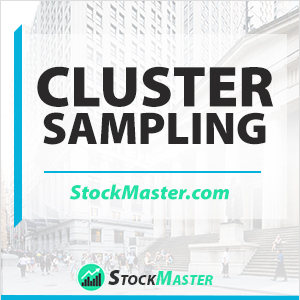 What Is Cluster Sampling?
What Is Cluster Sampling?
Definition: Cluster sampling is a sampling method that entails the creation of small groups of data often referred to as clusters, from a wider population, for analysis purposes. By dividing the overall population into small groups, researchers are able to select random samples from any cluster or group for analysis.
The market research technique is ideal where researchers have to deal with huge troves of data. By simply grouping the troves of data into small clusters, researchers are able to carry out detailed analysis with the random samples acting as representative of the whole data.
Cluster sampling is categorized into two — single-stage cluster sampling, whereby all elements in a cluster are used for analysis or study. Two-stage cluster sampling, on the other hand, involves the selection of a random sample from a group.
Cluster Sampling Example
Consider a researcher who wants to study how high school students in the U.S performed in science in a given period. It would be impossible to carry out the study while focusing on all the top schools in the country. In this case, the researcher might have to group all the high schools into groups.
By using cluster sampling, the researcher would group high schools based on the states in which they are found. With each state having its fair share of high schools, the researcher would then go on picking one high school from each state for analysis purposes. The outcome will thus act as a representation of the state’s overall performance.
Cluster Sampling Requirements
A researcher must take into consideration several things when relying on cluster sampling for analysis.
The cluster elements under study should be as heterogeneous as possible. What this means is that the overall population should contain distinct subpopulation made up of unique data sets.
Likewise, each cluster up for analysis should act as a representation of the entire population.
Each group under study should be unique in its way. What this means is that no cluster should be similar to another.
Cluster Sampling vs. Stratified Sampling
Cluster sampling and stratified sampling share several attributes. However, they also differ a great deal in some aspects. In stratified sampling all, the data in a sub-group or strata are sampled. In cluster sampling, researchers select a sample from a cluster of the entire population. In cluster sampling, only some groups are analyzed while the others are left.
Cluster Sampling Advantages
Cluster sampling is a more affordable method of analyzing vast sets of data. Instead of allocating resources on all the data under study, researchers only have to group the entire population into groups from which one sample is selected for the study.
In addition to being cheap, cluster sampling hastens the sampling process given the reduced data set that a researcher must focus on. The possibility of large samples in clusters averts the risk of loss of accuracy in information per data under study.
Cluster sampling also makes it possible to increase the sample size, given that one only has to take a sample from several groups or areas of study.
The division of the entire population into groups increases feasibility in the sampling process. Likewise, each cluster acts as a representation of the whole community.
Cluster Sampling Disadvantages
One of the most significant drawbacks of cluster sampling has to deal with the fact that a sample from a cluster act as the least representative of the entire population. The fact that a researcher can only select a sample from a small group to act as a representation of the whole community may not provide an accurate representation of an entire data set under study.
The fact that cluster sampling relies heavily on probability means it is always prone to errors. The limited number of clusters understudies leaves out a significant portion of the overall population that could have provided valuable data.
Likewise, cluster sampling may struggle to provide an accurate picture of diversity in a given data set. This is especially the case where clusters are formed based on a bias opinion.
